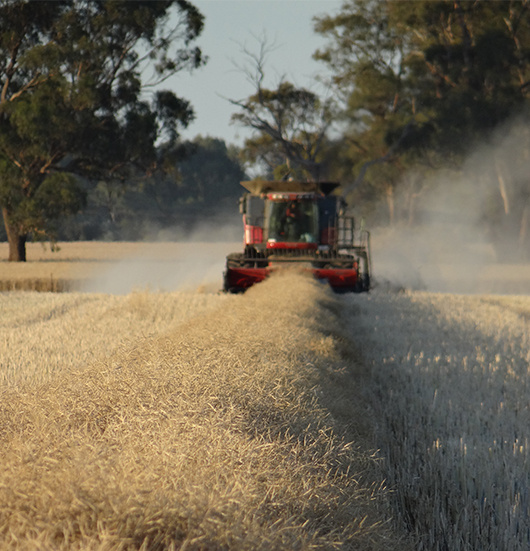Ensuring safety and preparedness during harvest
Harvest is a long haul and safety and well-being need to always take priority.

Key messages
- Develop a plan to identify and manage safety risks during harvest
- Communicate early and often with your team to manage risks and prevent accidents
With harvest in full swing, it's crucial for farmers to prioritise their wellbeing and safety and the wellbeing and safety of their team. Below are some tips that will help navigate the busy time that is harvest!
Stress management: a balancing act
The demands of harvest can be overwhelming, often leading to heightened stress levels. Recognising the importance of mental health during this time and acting early is crucial.
Tips on prevention:
- Schedule breaks, entire operation pauses for a designated time at regular intervals, to stretch and recharge. What might seem like an unnecessary delay is reducing future risk.
- Regularly eat healthy, substantial meals and drink plenty of water (2.5 - 3L for an adult).
- Be wary of the night shift and the added exhaustion it creates.
- Avoid alcohol.
- Do not try to manage fatigue with over consumption of caffeine.
- Most importantly, open communication within the team and management.
Symptoms to look out for:
- Headaches, dizziness, blurry vision
- Slow reflexes and reactions, poor concentration
- Feeling irritable, moody, short tempered
- Aching or weak muscles
- Feeling tired or sleepy, experiencing micro-sleeps
Another effective way to minimise stress is to celebrate achievements and milestones. Recognising the hard work and progress made by your harvest team can boost morale and create a sense of accomplishment.
Successfully navigating harvest season requires a delicate balance between productivity and personal care. By implementing stress management techniques and prioritising safety measures, you can create an environment where both your physical and mental wellbeing thrive.
Safety first
Ensuring the safety of yourself, your team, and your equipment is paramount. A few simple precautions can go a long way in preventing accidents and maintaining a safe working environment.
Check equipment: Before getting started, thoroughly inspect all machinery and vehicles. Regular maintenance checks ensure that your equipment operates smoothly, reducing the risk of breakdowns and accidents.
Protective gear: Personal protective equipment (PPE) is non-negotiable. Using the appropriate gear significantly minimises the risk of injuries.
- Enclosed work boots
- High-vis clothing
- Dust masks and goggles
Emergency preparedness: Have a well-stocked first aid kit readily available and familiarise your team with emergency procedures including what to do in case of a fire. Being prepared for unforeseen circumstances can make all the difference in handling incidents effectively.
Fires during harvest are far too common and are usually completely preventable. Some tips to pass on to your crew, especially those who may be doing their first season:
- Check all fire extinguishers are in place and up to date.
- Regularly and thoroughly clean down machinery.
- Monitor bearings.
- Maintain and keep airflow systems clear.
- Ensure fire-fighting unit is ready and available.
- Keep a keen eye on weather forecasts. Unpredictable weather conditions can pose risks, and staying informed allows you to plan accordingly and ensure the safety of both personnel and crops.
- Communicate - have a plan in place.
While these tips might seem ‘easier said than done’, safety and preparedness can often become a lesser priority to getting the job done. Nothing is more important than safety, so make a plan to identify and manage your safety risks this harvest season.
Resources & further reading
Author
NEWS
Keep up to date with the latest news from across the Riverine Plains.
-
Livestock
-
People
-
Grains
-
Sustainability

